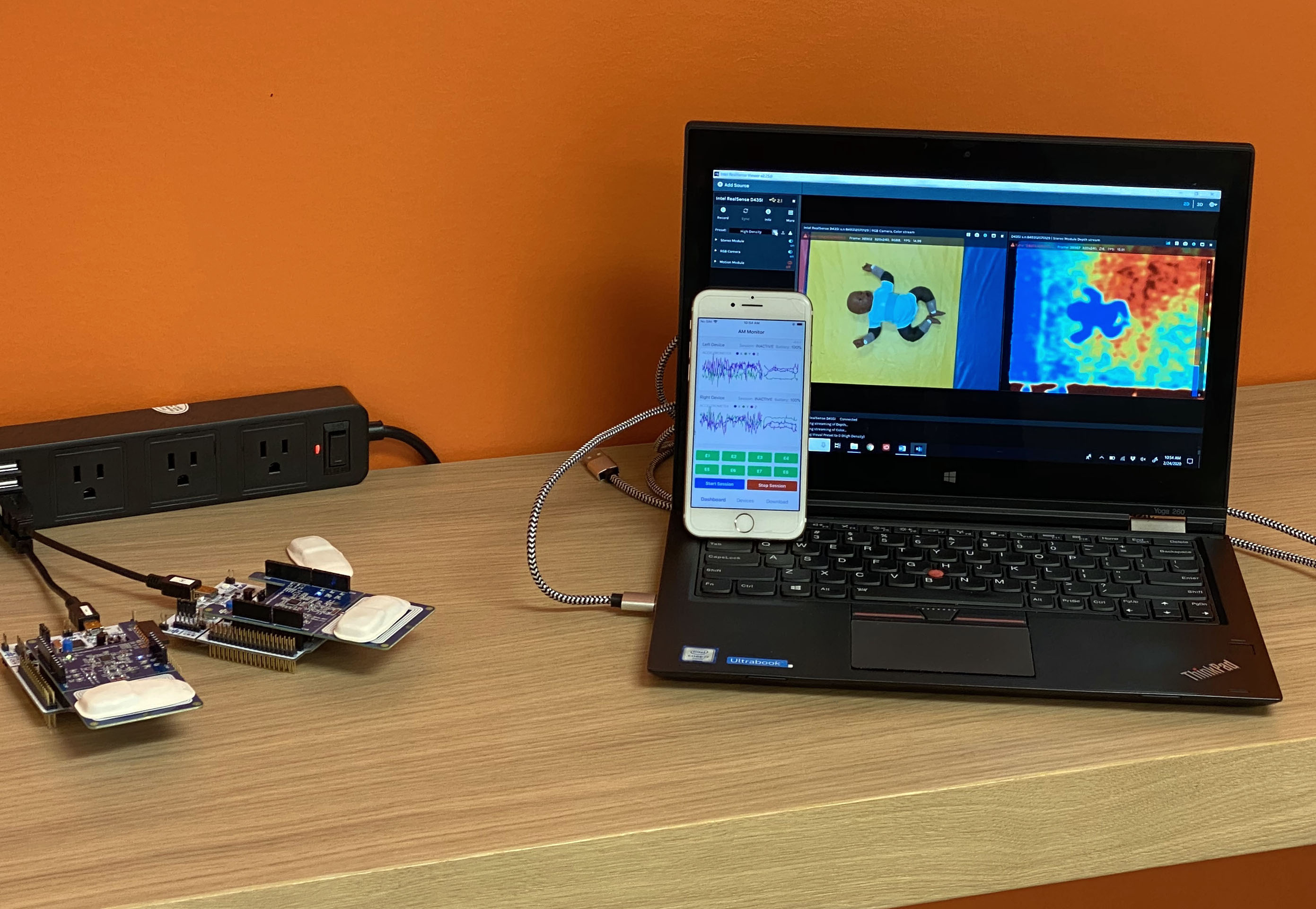Overview
Body
Currently, detection of abnormal motor behavior and development often relies on observation based clinical assessments, which may be administered late (or not at all), require specialized training, or have lower sensitivity for mild symptoms. There remains a need for more accessible and robust tools capable of detecting atypical behavior early in infancy, which is critical for promoting optimal motor and sensory development.
Recent developments in wireless telecommunication and flexible sensors have dramatically facilitated measurement of human movement. This work, pioneered in the laboratory of Dr. John Rogers, PhD at Northwestern University (Center for Bio-Integrated Electronics), has now been implemented throughout the Shirley Ryan AbilityLab for several disorders such as Parkinson’s disease, orthopedic gait abnormality, sleep disorders, swallowing dysfunction, and altered neuromuscular activation patterns in disorders such as stroke and spinal cord injury. Recently, the Center for Bio-Integrated Electronics developed a set of pediatric sensors that can be used in infants to measure their limb movement and muscle activation.
The goal of this project is to test flexible body-worn sensors and video technology to provide high-resolution measures of motor development in infants, starting from a very young age and continuing up to 2 years of age.

Sensors will be placed on the legs, arms, chest and head using soft bandage wraps or a gentle adhesive. The sensors will record the child's movements in various postures and tasks. A video camera will also record their movements.
We believe that, using our expertise in machine learning combined with direct observation of these infants by highly-trained therapists, we can automate the detection of atypical motor or sensory development in early infancy. This will make early detection objective and straightforward, while using developmentally sensitive reassessments as infants grow. We expect this approach will enable earlier intervention to address atypical motor and sensory development through a scientifically identified new state-of-science therapeutic intervention which includes our specialized therapy designed from birth onward.
Subject Population
Body
- Children less than 2 years old
Study Personnel
Mentioned Profile

Arun Jayaraman, PT, PhD
Scientific Chair, Technology & InnovationStudy Partners
Body
Rogers Research Group, Northwestern University
DevSci's Data Science Hub, Northwestern University
Funding Source
Body
Corbett MW Ryan Foundation
Participation
Body
Want to participate in this study? Fill out this interest form.
